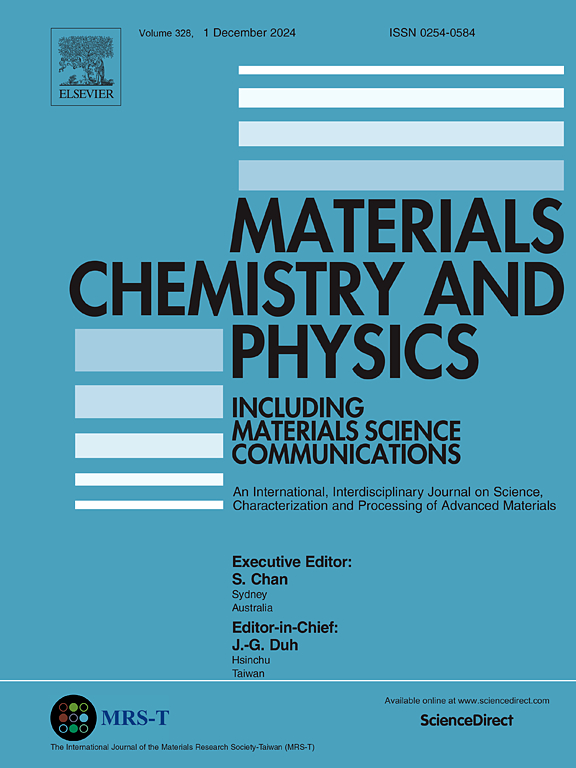用于节能智能窗的透明热反射 PVA/Cu/PVA 光子结构
IF 4.3
3区 材料科学
Q2 MATERIALS SCIENCE, MULTIDISCIPLINARY
引用次数: 0
摘要
本文章由计算机程序翻译,如有差异,请以英文原文为准。

Transparent heat reflecting PVA/Cu/PVA photonic structures for energy saving smart windows
Development of transparent heat reflecting, hence energy-saving windows using cost-effective materials has a pivotal role in interior temperature control of buildings, especially considering the regular growth in ambient temperature globally. The present article focuses on developing polymer/metal/polymer transparent heat reflection (THR) multilayer coatings on glass substrates. We have used polyvinyl alcohol as the polymer and copper films as metal coatings in the three-layer stack that was fabricated. We investigate the structure, uniformity, continuity, and optical properties of PVA/Cu/PVA multilayers using Field Emission Scanning Electron Microscope, ellipsometry, stylus profilometer, and UV-VIS-NIR spectrophotometer. The optical modeling using COMSOL Multiphysics software optimizes individual layer thickness. Annealing at 70 °C enhances the THR property and improves crystallinity. Samples annealed at 70 °C for 30 min with 95 nm thick PVA (2w/v %) and Cu of 15 nm thickness show maximum optical transmittance of 76.6 % in the visible band centered at 605 nm while transmitting only ≈ 9.2 % at 2000 nm in the infrared region. The high visible transmittance and low infrared transmittance of the PVA/Cu/PVA multilayer have the potential for energy-saving smart window applications.
求助全文
通过发布文献求助,成功后即可免费获取论文全文。
去求助
来源期刊

Materials Chemistry and Physics
工程技术-材料科学:综合
CiteScore
8.70
自引率
4.30%
发文量
1515
审稿时长
69 days
期刊介绍:
Materials Chemistry and Physics is devoted to short communications, full-length research papers and feature articles on interrelationships among structure, properties, processing and performance of materials. The Editors welcome manuscripts on thin films, surface and interface science, materials degradation and reliability, metallurgy, semiconductors and optoelectronic materials, fine ceramics, magnetics, superconductors, specialty polymers, nano-materials and composite materials.
 求助内容:
求助内容: 应助结果提醒方式:
应助结果提醒方式:


